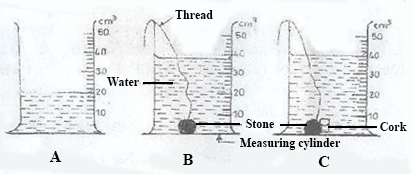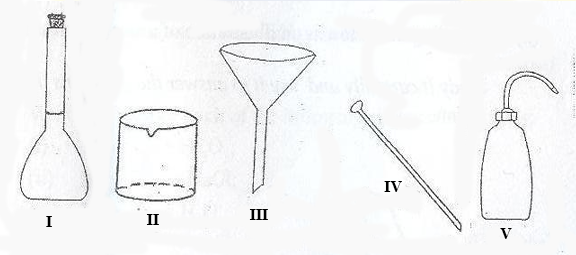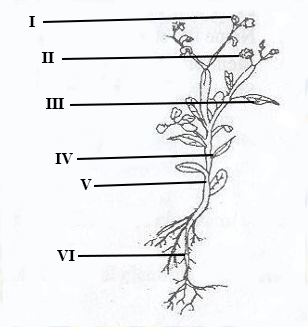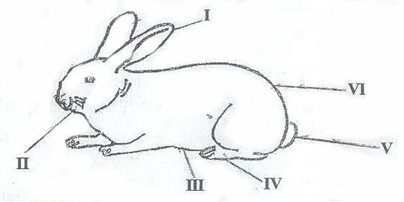ESSAY
This paper is in two parts: I and II. Answer Question 1 in part I and any other four question in part II
PART I
[40 marks]
Answer all of Question 1
-
The diagrams below are illustrations of an experiment in the laboratory using a piece of stone, a cork of mass 4.0 g and other necessary materials.

The initial volume of water in A was read and noted. A string was attached to a piece of stone and the stone lowered gently into the water as shown in B. The volume was again read and noted. Finally, the cork of mass 4.0 g was attached to the stone and both materials lowered gently into the water as shown in C. The volume was read and noted.
Why did the level of the water rise when the stone was lowered gently into it as shown in diagram B.
Why was it necessary to attach the stone to the cork before lowering it gently into the water as shown in diagram C?
What would have happened if the cork alone were lowered gently into the water?
What is the volume of the
stone?
cork?
Calculate the density of the cork.
Why were the materials lowered gently into the water?
-
A salt solution was prepared in the laboratory using the set of apparatus illustrated below. Study the illustrations carefully and used them to answer the question that follow.

-
Name each of the apparatus labelled I, II, III, IV and V.
-
State one function of each of the apparatus labelled I, II, III, IV and V.
-
-
The diagram below is an illustration of the external features of a flowering plant.
Study the diagram carefully and answer the questions that follow.

-
Name the parts labelled I, II, III, IV, V and VI.
-
State one function of each of the parts labelled I, II, III, V and VI.
-
State the two main parts of a flowering plant.
-
-
The diagram below is an illustration of a small farm animal.
Study the set-up carefully and answer the questions that follow:

-
Identify the animal.
-
Name each of the parts of the animal labelled I, II, III, IV, V and VI.
-
Name the structure in which the animal is kept.
-
Mention three breeds of the animal.
-
State two management practices to be adopted in order to control diseases and pests in the rearing of the animal.
-